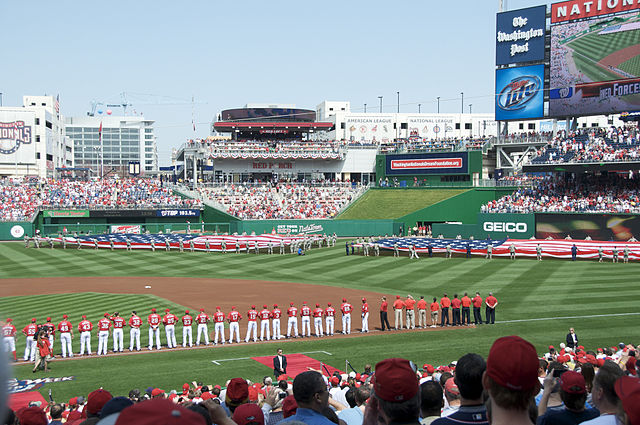Happening Now
Transit and the modern sports stadium
October 16, 2012
Written By Sean Jeans Gail

Win or lose, fans shifting expectations about the trip home
Major League Baseball’s playoffs are in full swing, and fans across the country are feeling the agony and the ecstasy that come with surges, comebacks, elimination games, and living to fight another day. And while baseball’s traditional anthem has supporters singing “I don't care if I never get back,” the truth is, driving home from the game is increasingly the biggest headache of the whole process.
For the Washington Nationals, the post-season ended this last Friday with a dispiriting loss to the St. Louis Cardinals. And while there’s nothing particularly new about the Nationals letting their fans down, Friday night did feature a new wrinkle: as the more than 40,000 fans exited Nationals Park, almost 40 percent of them headed down into Washington’s Metro Rail system to board a train (and think about next year).
Here’s the really strange thing, though: it took months-long talks and a corporate benefactor to ensure that those trains would even be running.
On weekdays, Metro Rail operations cease at midnight, and there was concern about how tens of thousands of people would get home if Metro stations were closed by the time the games let out. Talks began back in Julyover how to accommodate this travel, and a disagreement arose between the District of Columbia, the Washington Metropolitan Transportation Authority, the team, and the MLB head office over who would pay for the extended hours of service.
The online company LivingSocial swooped into the rescue, promising to pay for any extended operations not covered by farebox revenue.The business ponied up the $29,500-per-hour deposit that would’ve kept the stations operating for the stadium passengers, garnering public praise and goodwill in the process.
That offer turned out to be unnecessary, for a variety of reasons. The two weekday games were scheduled for early afternoon starts, and the only one game that let out past midnight occurred on Friday, when Metro operates until 3 AM as a matter of course. But Living Social would’ve been off the hook, regardless—the system only needed to serve 5,504 riders per hour before the additional service paid for itself. The Washington Examiner’s Kytja Weir provided some hard data about Friday night’s ridership figures:
Metro logged 15,678 riders entering the system after the game ended, with 12,858 at Navy Yard-Ballpark and the rest from the Capitol South, Federal Center or Waterfront stations, according to Metro. Those figures do not include the regular ridership the system would have had on a Friday night, Metro spokesman Philip Stewart said.
That's 37 percent of the 41,546-seat Nats stadium.
This is a story about outmoded expectations about travel behavior. Transit has become the secret ingredient to development—that includes downtowns, retail centers, and the modern sports facility. The public demand for modern and efficient public transit—of which rail is a key component—will continue to drive where people want to live, work, and play. Planners ignore this reality it at their own risk.
It’d be nice for Washington if the Nationals could return to the playoffs next year. And for the sake of all those fan/passengers looking to actually get home, let’s hope the powers-that-be shift their expectations accordingly.
"The National Association of Railroad Passengers has done yeoman work over the years and in fact if it weren’t for NARP, I'd be surprised if Amtrak were still in possession of as a large a network as they have. So they've done good work, they're very good on the factual case."
Robert Gallamore, Director of Transportation Center at Northwestern University and former Federal Railroad Administration official, Director of Transportation Center at Northwestern University
November 17, 2005, on The Leonard Lopate Show (with guest host Chris Bannon), WNYC New York.
Comments